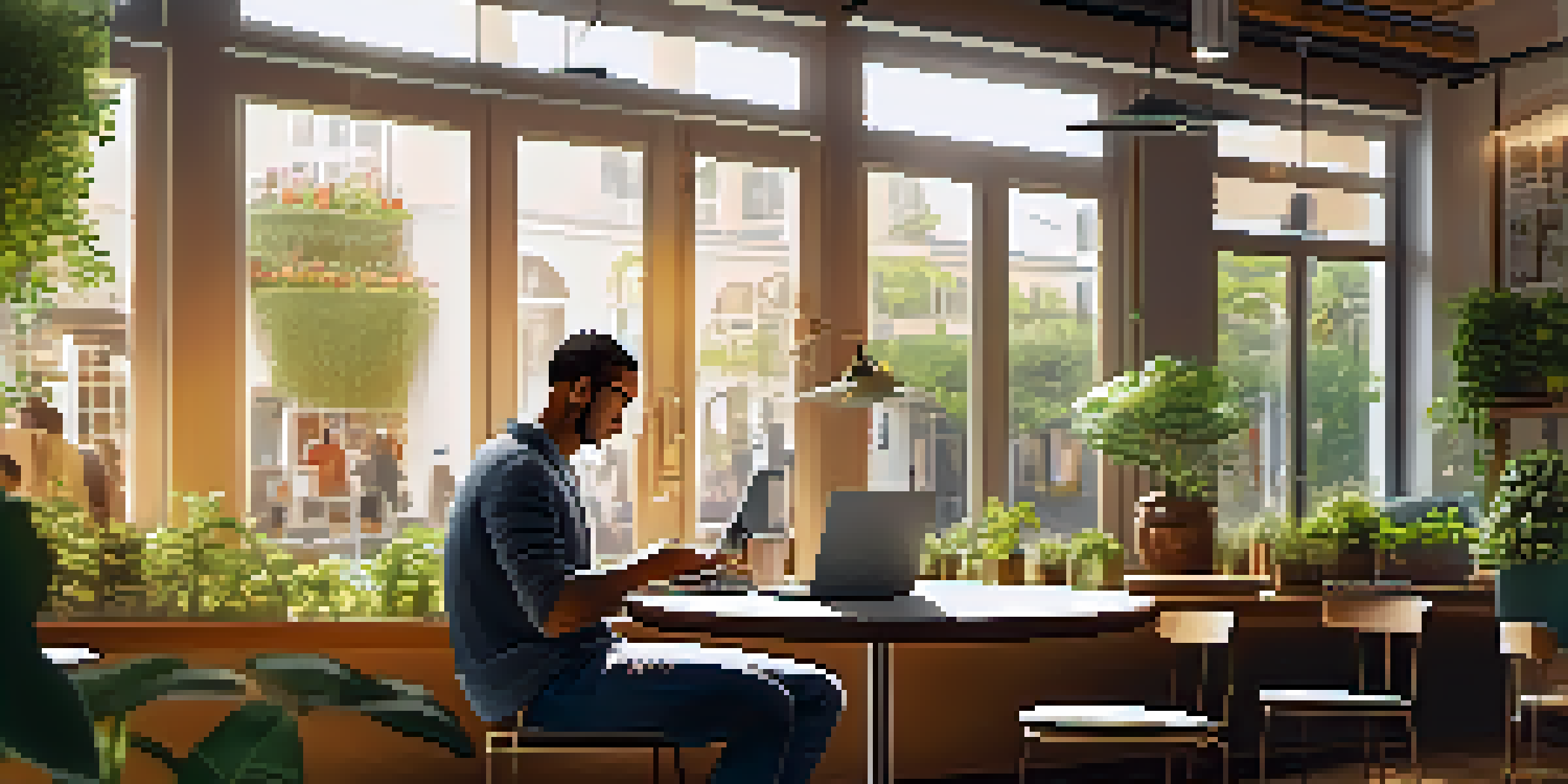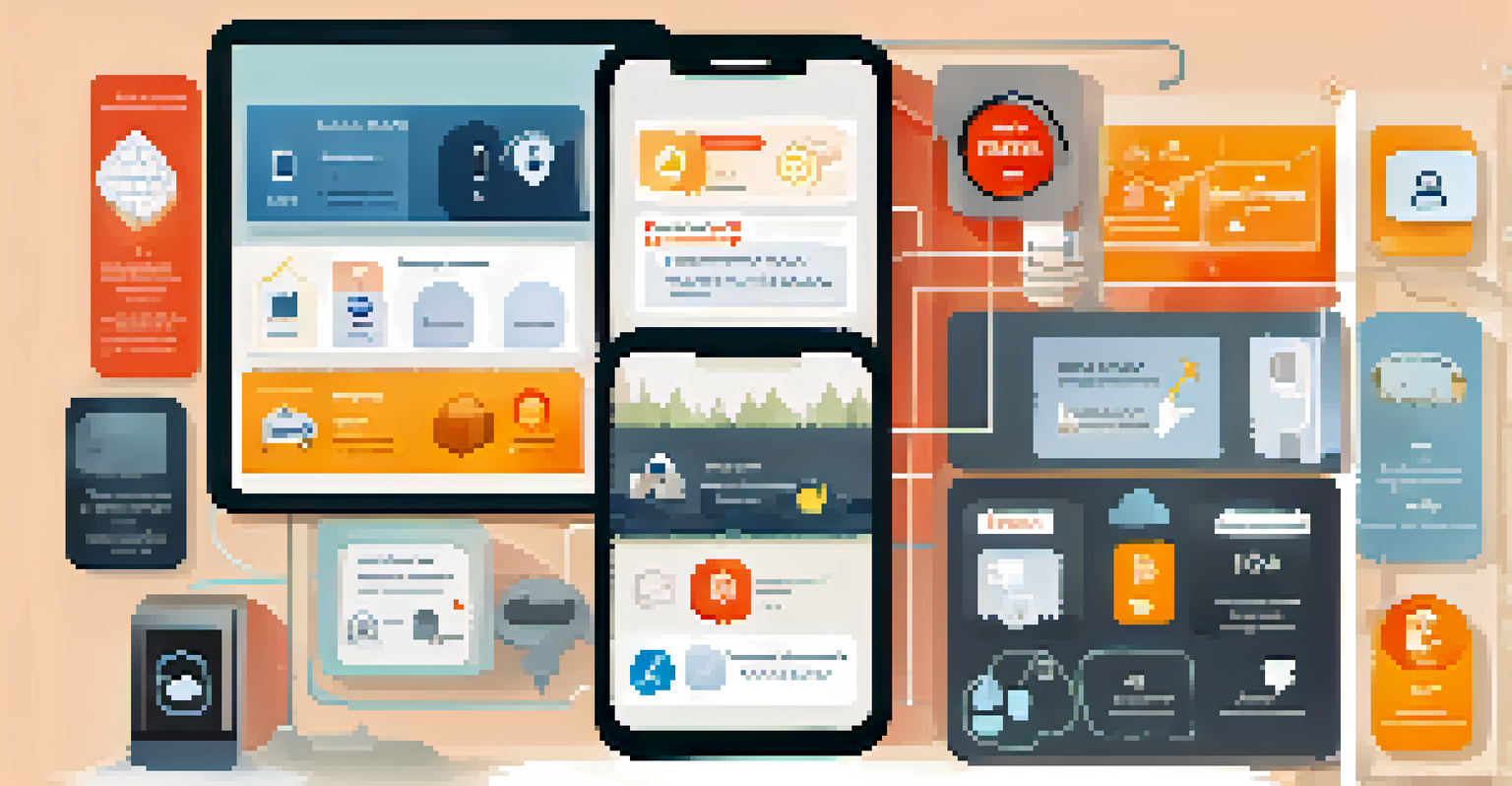Personal Safety Apps Every Remote Worker Should Download

Why Personal Safety Apps Are Crucial for Remote Workers
In today's digital age, remote workers often find themselves in unfamiliar environments, whether it's a coffee shop or a co-working space. This shift in work dynamics brings unique safety challenges that traditional office settings rarely present. Personal safety apps can serve as a lifeline, ensuring that help is just a tap away in case of an emergency.
Safety isn't just a gadget; it's a mindset.
These apps are designed to empower users by providing quick access to emergency contacts, real-time location tracking, and even safety alerts. For instance, if you're working late in a public space, a personal safety app can send your location to a trusted friend with ease, providing peace of mind. The value of having these tools at your fingertips cannot be overstated, especially when you are working alone.
Moreover, many of these applications offer features that go beyond emergencies, such as safety tips, check-in reminders, and community alerts. This holistic approach to personal safety helps remote workers feel more secure, allowing them to focus on their tasks rather than worrying about their surroundings.
Top Personal Safety Apps for Remote Workers
There are several standout personal safety apps that cater specifically to the needs of remote workers. Apps like 'Life360' offer family location sharing and emergency alerts, making it easy to stay connected with loved ones. Meanwhile, 'SafeTrek' allows users to hold down a button if they feel unsafe; releasing it prompts a call to local authorities if you don't enter a PIN.

Another popular choice is 'bSafe,' an app that includes features like voice activation for alerts and a 'fake call' option to help you escape uncomfortable situations. These apps provide a blend of practicality and peace of mind, making them indispensable tools for anyone working remotely. Each app has its unique features, so it’s worth exploring which one fits your lifestyle best.
Importance of Safety Apps
Personal safety apps are essential for remote workers, providing quick access to emergency contacts and location tracking.
Lastly, 'Noonlight' offers a seamless experience by integrating with smart devices, allowing users to connect directly to emergency services. This app is especially useful for those who might frequently travel or work in less populated areas. By choosing the right app, remote workers can significantly enhance their personal safety.
How to Choose the Right Safety App for You
When selecting a personal safety app, it's essential to consider your specific needs and lifestyle. Think about the environments you frequently work in and the potential risks associated with them. For instance, if you often work in bustling cafes, you might prioritize features like location sharing and direct communication with family or friends.
In an increasingly digital world, personal safety is a shared responsibility.
User-friendliness is another crucial factor; you want an app that is easy to navigate, especially in stressful situations. Testing a few different apps can help you determine which interface feels most intuitive to you. After all, in an emergency, the last thing you want is to fumble with a complicated app.
Lastly, consider the app's privacy policies and data security measures. You want to ensure that your information is protected, especially when sharing your location or personal details. A good app will be transparent about its privacy practices and give you control over your data.
The Role of Community in Personal Safety Apps
Many personal safety apps incorporate community features, allowing users to support each other in times of need. This sense of community can be incredibly reassuring for remote workers who may feel isolated while working alone. For instance, some apps allow users to share alerts or safety tips with their local network, creating a virtual safety net.
Community-driven features can also include real-time updates about local safety incidents, helping users stay informed about potential dangers in their area. This collective awareness not only empowers individuals but also fosters a supportive environment where everyone looks out for one another. When remote workers feel connected to their local community, they are more likely to feel safe and secure.
Choosing the Right App
Selecting a personal safety app should be based on individual needs, user-friendliness, and privacy protections.
Moreover, these community elements can enhance the effectiveness of safety features; for example, if someone sends out an alert, nearby users can respond or assist. This interconnectedness can be a game-changer, providing an additional layer of security that traditional safety measures might lack.
Integrating Safety Apps into Your Daily Routine
Incorporating personal safety apps into your daily routine can be seamless and empowering. Start by setting up the app in advance, adding emergency contacts, and familiarizing yourself with its features. This way, when you need it most, you're not scrambling to figure things out; you can act quickly and confidently.
Consider establishing a routine check-in with a trusted friend or family member, using the app's location-sharing feature. This simple practice can significantly enhance your safety while also fostering communication and connection. Knowing someone is aware of your whereabouts can provide peace of mind, especially when working in unfamiliar areas.
Lastly, make it a habit to review your safety settings regularly. As your work environment changes or as you travel, your safety needs may evolve as well. By staying proactive and engaged with your personal safety app, you ensure that you're always prepared for any situation.
Understanding Limitations of Personal Safety Apps
While personal safety apps are valuable tools, it's essential to understand their limitations. These apps should complement, not replace, traditional safety practices. For example, relying solely on an app while neglecting basic safety awareness can lead to potentially dangerous situations.
Additionally, connectivity issues can hinder the effectiveness of these apps. If you're in an area with poor service, features like location tracking or emergency alerts may not work as intended. It's crucial to remain mindful of your surroundings and take proactive measures, such as informing someone of your location before heading out.
Community Support Enhances Safety
Community features in safety apps foster a supportive network, allowing users to alert and assist one another in real-time.
Lastly, not all personal safety apps are created equal. Some may have features that are more suited to urban environments and may be less effective in rural areas. Understanding the specific capabilities and shortcomings of your chosen app will ensure that you’re not left stranded in an emergency.
The Future of Personal Safety Apps for Remote Workers
As technology continues to evolve, personal safety apps are becoming increasingly sophisticated. Innovations in artificial intelligence and machine learning are set to enhance features like real-time risk assessments and personalized safety recommendations. This means that in the near future, your safety app could not only react to emergencies but also anticipate potential threats based on your behavior and environment.
Moreover, integration with smart home devices could create a seamless safety ecosystem. Imagine being able to control your home security system, receive alerts, and communicate with emergency services all from one app. This interconnectedness will not only streamline user experience but also provide a comprehensive approach to personal safety.

As remote work becomes a lasting trend, the demand for effective personal safety solutions will likely grow. Developers will need to stay attuned to the unique challenges faced by remote workers, ensuring that safety apps remain relevant and effective. The future looks promising for personal safety technology, and remote workers can look forward to even greater support in maintaining their safety.